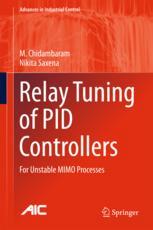

Most ebook files are in PDF format, so you can easily read them using various software such as Foxit Reader or directly on the Google Chrome browser.
Some ebook files are released by publishers in other formats such as .awz, .mobi, .epub, .fb2, etc. You may need to install specific software to read these formats on mobile/PC, such as Calibre.
Please read the tutorial at this link: https://ebookbell.com/faq
We offer FREE conversion to the popular formats you request; however, this may take some time. Therefore, right after payment, please email us, and we will try to provide the service as quickly as possible.
For some exceptional file formats or broken links (if any), please refrain from opening any disputes. Instead, email us first, and we will try to assist within a maximum of 6 hours.
EbookBell Team

0.0
0 reviewsThis book presents comprehensive information on the relay auto-tuning method for unstable systems in process control industries, and introduces a new, refined Ziegler-Nichols method for designing controllers for unstable systems. The relay auto-tuning method is intended to assist graduate students in chemical, electrical, electronics and instrumentation engineering who are engaged in advanced process control. The book’s main focus is on developing a controller tuning method for scalar and multivariable systems, particularly for unstable processes. It proposes a much simpler technique, avoiding the shortcomings of the popular relay-tuning method. The effects of higher-order harmonics are incorporated, owing to the shape of output waveforms. In turn, the book demonstrates the applicability and effectiveness of the Ziegler-Nichols method through simulations on a number of linear and non-linear unstable systems, confirming that it delivers better performance and robust stability in the presence of uncertainty. The proposed method can also be easily implemented across industries with the help of various auto-tuners available on the market. Offering a professional and modern perspective on profitably and efficiently automating controller tuning, the book will be of interest to graduate students, researchers, and industry professionals alike.